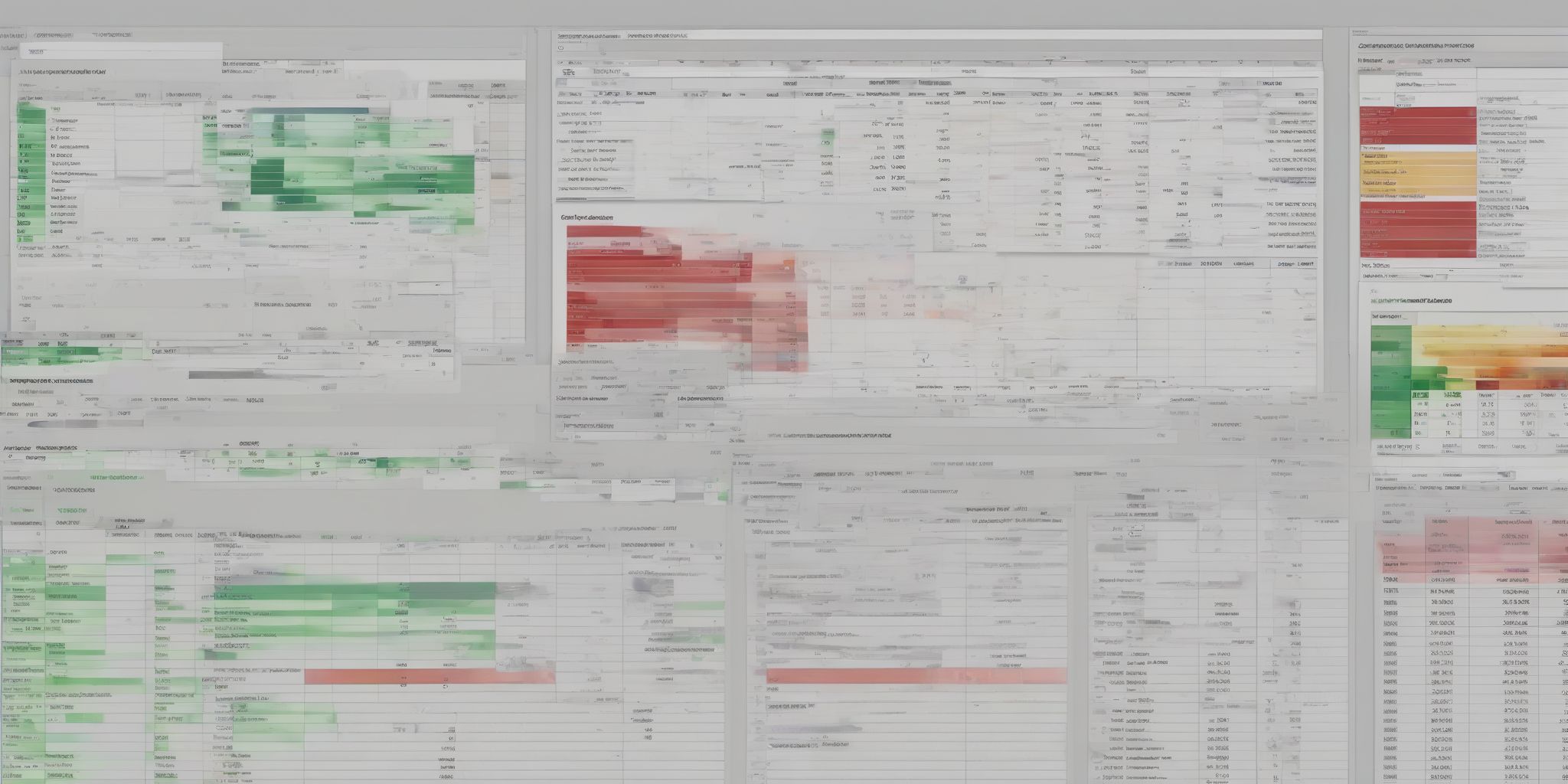Setting SMART Goals for Your Financial Plan: Key Principles to Follow
Hey there, future financial rockstar! Are you ready to take control of your financial future and make some serious money moves? Well, you've come to the right place.
In this article, we're going to dive into the world of SMART goals and how they can supercharge your financial plan. Whether you're saving up for that dream vacation, planning for retirement, or just want to achieve your money goals, understanding these key principles will set you on the path to success. So, grab your favorite cup of coffee, sit back, and get ready to slay those financial goals like a boss. Let's go!
Importance of Setting SMART Goals
Setting SMART goals in financial planning is vital for ensuring clarity, focus, and progress. These goals provide a framework that is Specific, Measurable, Achievable, Relevant, and Time-bound, guiding individuals towards their desired outcomes. By defining specific objectives, such as saving a certain amount for retirement or paying off debt within a specific timeframe, individuals can effectively track their progress and make necessary adjustments along the way.
For instance, a SMART goal could be saving 20% of monthly income for a down payment on a house within two years. Such goals provide concrete targets and motivate individuals to take action, leading to greater financial success.
Understanding SMART Goals
Definition and Components of SMART Goals
SMART goals are well-defined objectives that guide your financial plan. The acronym SMART stands for Specific, Measurable, Achievable, Relevant, and Time-bound. A specific goal clearly defines what you want to achieve, such as saving for a down payment on a house. Measurable goals have quantifiable criteria like saving a specific amount each month. Achievable goals are realistic and within your reach, taking into account your income and expenses.
Relevant goals align with your financial priorities and values. Time-bound goals have a set deadline for completion, providing a sense of urgency and focus.
For example, setting a goal to pay off your credit card debt within six months is a SMART goal.
Specific
Specificity is a fundamental principle when setting plan goals for your financial journey. Clearly defining what you want to achieve allows for focused efforts and a greater likelihood of success. For instance, instead of a vague goal like "save more money," a specific goal could be "save $500 per month for a down payment on a house within two years." This specificity brings clarity and provides a clear target to work towards.
By identifying the exact amount, timeline, and purpose of your goals, you can create actionable steps and measure your progress effectively.
Measurable
Plan goals should always be measurable, allowing you to track your progress and determine whether you're on the right track. By setting specific metrics or numerical targets, you can objectively evaluate your success.
For example, rather than setting a vague goal to "save money," a measurable goal would be to save $500 per month. This way, you can easily determine if you are meeting your objective through regular monitoring. Tracking measurable goals not only provides clarity but also motivates you to stay focused and make necessary adjustments along the way.
Achievable
Setting achievable goals is a fundamental aspect of financial planning. Your goals must be realistic and within reach so that you can build momentum and stay motivated. When your goals are attainable, you are more likely to take the necessary steps to achieve them.
For example, if your goal is to save a certain amount of money each month, make sure it aligns with your income and expenses. Setting a goal that is too ambitious may lead to frustration and give up. By setting achievable goals, you can steadily progress towards your financial aspirations and create a solid foundation for your future.
Relevant
Relevant: A critical aspect of setting effective plan goals is ensuring they are relevant to your overall financial objectives. This means that each goal should directly contribute to your desired financial outcomes and align with your current circumstances.
For example, if your long-term goal is to purchase a house, it would be relevant to set short-term goals focused on saving for a down payment or improving your credit score. By keeping your goals relevant, you avoid wasting time and effort on pursuing objectives that don't significantly impact your financial plan.
Time-bound
Time-bound is a crucial component when setting plan goals. It provides a sense of urgency and helps prioritize actions. Having a specific deadline creates accountability and helps measure progress. For instance, if you aim to save a certain amount for retirement, setting a timeline will guide your savings efforts. Without a time-bound goal, it becomes easy to procrastinate and lose focus.
By setting realistic timelines, you can break down your goals into manageable steps and track your progresseffectively. Remember, time-bound goals help keep you motivated and ensure you stay on track towards achieving your financial objectives.
Benefits of SMART Goals in Financial Planning
Plan goals that are SMART (Specific, Measurable, Achievable, Relevant, Time-bound) offer several benefits in financial planning.
Firstly, they provide clarity by defining precise objectives, such as saving a specific amount for retirement or paying off a specific debt by a set date. This clarity helps to sharpen focus and guide decision-making.
Secondly, SMART goals make it easier to track progress and measure success, allowing individuals to assess whether they are on track or need to make adjustments. Lastly, SMART goals enhance motivation and provide a sense of accomplishment as milestones are achieved.
For example, setting a SMART goal of saving a specific amount each month for a down payment on a house provides a clear target and offers a sense of progress as the savings grow.
Developing SMART Financial Goals
Assessing Your Current Financial Situation
Assessing your current financial situation is a crucial step in setting SMART goals for your financial plan. It provides a clear understanding of where you stand financially and helps identify areas for improvement. Start by evaluating your income, expenses, savings, and debt. Consider factors such as your earning potential, job security, and any potential financial risks. Analyze your spending habits and identify areas where you can cut back or save more.
Additionally, review your current investments and determine if they align with your goals. By thoroughly assessing your financial situation, you can make informed decisions and set realistic goals for your financial plan.
Identifying Short-term and Long-term Goals
Identifying short-term and long-term goals is a crucial step in creating a financial plan. Short-term goals typically span one to three years, while long-term goals extend beyond that timeframe. Short-term goals can include building an emergency fund, paying off debt, or saving for a vacation. Long-term goals may involve retirement planning, purchasing a home, or funding a child's education. By identifying both types of goals, you can prioritize and allocate your resources effectively.
For example, focusing on short-term goals allows for immediate progress, while also keeping long-term objectives in sight. It's important to strike a balance between these goals to ensure financial stability and future growth.
Creating Specific and Measurable Goals
- Define the precise objectives you want to achieve with your financial plan.
- Avoid vague statements and be specific about what you want to accomplish.
- For example, instead of saying "save money," specify an amount or percentage you want to save each month.
- Use quantifiable metrics to measure progress. This could include tracking your savings, investment returns, or debt reduction.
- Having measurable goals allows you to evaluate your progress and make adjustments as necessary.
- It provides clarity and motivation, as you can see tangible results.
- For instance, if one of your plan goals is to pay off your credit card debt, set a specific amount and timeframe to achieve it.
- Remember, the more specific and measurable your goals are, the easier it becomes to track and work towards them.
Ensuring Goals are Achievable
To ensure your plan goals are achievable, it's important to set realistic expectations. Consider your current financial resources, such as income and savings, as well as any potential obstacles or limitations you may encounter.
For example, if your goal is to save a certain amount of money each month, make sure it aligns with your income and expenses. Setting an unrealistic goal may lead to frustration or disappointment. By setting achievable goals, you can maintain motivation and make steady progress towards your financial targets. Remember, it's better to start small and gradually increase the difficulty as you achieve success.
Aligning Goals with Your Values and Priorities
Aligning your financial goals with your values and priorities is a crucial step in creating an effective financial plan. By understanding what truly matters to you, you can ensure that your goals are meaningful and motivating. For instance, if you prioritize family and security, your financial goals may include saving for a down payment on a house or establishing an emergency fund.
On the other hand, if personal growth and experiences are important to you, your goals might involve investing in education or budgeting for travel. By aligning your goals with what you value most, you'll be more likely to stay committed and focused on achieving them.
Setting Time-bound Goals
Setting time-bound goals is a vital aspect of effective financial planning. It provides a clear timeline for achieving your objectives and keeps you focused on progress. By assigning specific deadlines to your goals, you create a sense of urgency and accountability. For instance, instead of aiming to save a certain amount of money, set a goal to save that amount within a specific timeframe, such as six months or one year. This approach helps you stay motivated and track your progress more effectively.
Additionally, time-bound goals allow you to prioritize and allocate your resources efficiently, ensuring that you stay on track towards achieving your desired financial milestones.
Implementing Your Plan Goals
Breaking Down Goals into Actionable Steps
Breaking down your plan goals into actionable steps is vital for turning your aspirations into reality. Start by breaking each goal into smaller, manageable tasks that contribute to its achievement. For instance, if your goal is to save a specific amount for a down payment on a house, you may break it down into tasks such as reducing unnecessary expenses, increasing your income, and saving a set amount each month.
By breaking down your goals, you can create a clear roadmap and focus on the specific actions needed to make progress. Remember to set realistic timeframes for each step and celebrate milestones along the way to stay motivated and track your progress effectively.
Monitoring and Tracking Progress
Monitoring and tracking your progress is vital in achieving your plan goals. Regularly assessing your financial performance helps you stay on track and identify any necessary adjustments. One effective method is to track your spending and savings using a budgeting tool or spreadsheet.
Additionally, reviewing your investment portfolio periodically ensures it aligns with your risk tolerance and long-term objectives. Another helpful practice is to set specific milestones or checkpoints along the way to measure your progress.
For example, you can aim to pay off a specific amount of debt within a certain timeframe, or set a target for increasing your retirement savings each year. By actively monitoring and making adjustments as needed, you increase your chances of successfully reaching your financial goals.
Making Adjustments as Needed
- Financial plans should be flexible to accommodate changes in personal circumstances, market conditions, or unexpected events.
- Regularly review and reassess your plan goals to ensure they remain relevant and achievable.
- Be open to making adjustments when necessary, such as revising timelines or reallocating resources.
- Stay informed about economic trends, tax laws, and investment opportunities to make informed decisions.
- Seek professional advice or guidance from financial planners or advisors to help identify necessary adjustments.
- Regularly monitor your progress and make course corrections as needed to stay on track.
- Remember that flexibility and adaptability are key to successful financial planning.
By remaining adaptable and making adjustments as needed, you can keep your financial plan aligned with your evolving goals and priorities.
Over to you
Setting SMART goals for your financial plan is crucial to achieving success. Following key principles will help ensure you set effective goals. SMART stands for Specific, Measurable, Attainable, Relevant, and Time-bound. Being specific about what you want to achieve allows you to create a clear roadmap. Setting measurable goals allows you to track your progress and stay motivated.
Ensuring your goals are attainable means setting realistic expectations and avoiding setting yourself up for failure. Goals should also be relevant to your overall financial plan and align with your values and priorities.
Finally, setting a timeframe for achieving each goal helps create a sense of urgency and focus. Remember, setting SMART goals is the foundation for financial planning success.


